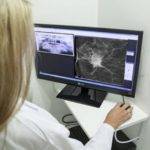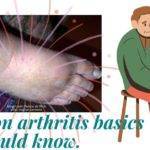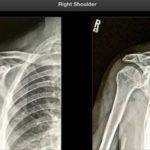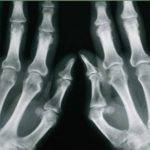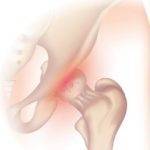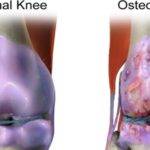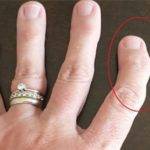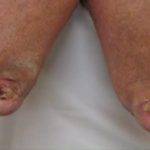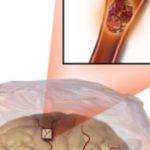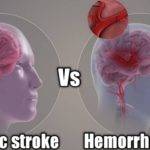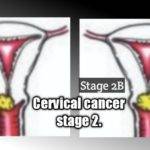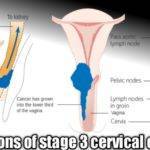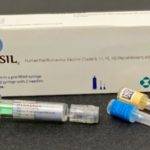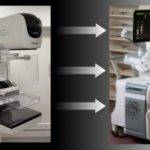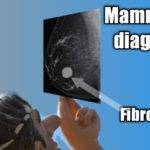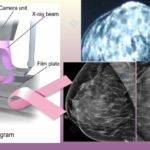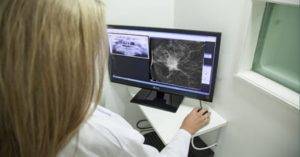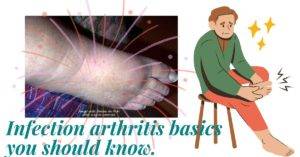
Table of Contents
Psoriasis arthritis is diagnosed using a combination of medical procedures as no one test can be reliably used to make a diagnosis. These procedures range from physical examination and history taking to elaborate medical images and laboratory tests. Skin biopsies may be needed for confirmation at times.
The disease can occur at any age but it’s common in patients between the ages of 30 and 50. Though not everyone with psoriasis goes on to develop arthritis research has shown about one-third of people with psoriasis will usually come up with arthritis in about 10 years after diagnosis of psoriasis.
A study published in the National Library of Medicine suggests undiagnosed psoriatic arthritis(PsA) is common.1 It can also be misdiagnosed as osteo or rheumatoid arthritis, especially in non-rheumatologic centers. In this article, we’ll take a look at some of the various means by which a diagnosis of psoriatic arthritis is made and how to distinguish it from rheumatoid or osteoarthritis.
How do I know if my arthritis is psoriatic?
It can be tricky to distinguish psoriatic arthritis from other similar diseases since it shares symptoms with them. For this reason, your doctor will be on the lookout for test results that rule out other possibilities as well as those that either point towards psoriatic arthritis or excludes it.
Below are several possible tests that can be conducted to make a diagnosis of psoriatic arthritis.
Physical examination and history taking.
During this time your symptoms are noted and any physical manifestation and abnormalities are also examined with a focus on:
- Condition of your joints
- State of fingernails,
- Any skin changes,
- Nature of swelling and tenderness if any,
- Your past medical history, and
- Any family history of psoriatic arthritis.
Keep in touch by signing up for our newsletter:
Medical Imaging studies.
X-rays: This involves the use of low-dose X-rays and is particularly useful when checking the state of your bones. It can reveal abnormal bone formations, erosion, and any distinguishing pattern of affectation that may suggest psoriatic arthritis or any other type of disease.
Apart from helping to make a diagnosis, x-rays are more often than not favored in follow-up examinations to keep track of the progression of the disease or the outcome of a treatment plan.
Computed Tomography scans (CT scan): It’s useful in the examination of joints like the pelvis that are deeply positioned in ways that make it challenging to have a clear view of them on X-rays. It’s also a very reliable tool for investigating any other internal organ in the body, like the brain.
I like how it presents the images in slices which make for a detailed study of an organ in bits. However, no matter how clear and detailed any image is, I don’t make any clinical decision till I’ve perused the radiologist’s report. Radiologists see things I miss in any medical image gotten from any machine, be it MRI, X-RAY, or CT scan.
I reject most medical images that land on my desk without an accompanying radiologist’s report. I think it’s in the best interest of patients especially those with serious medical conditions.
Magnetic Resonance Imaging (MRI): With MRI, a combined effect of powerful magnets and radiowaves creates high-resolution images of your internal organs. It’s pricier than an X-ray and is employed when X-ray images are unsatisfactory. In other words,
MRIs give much clearer images of your internal organs than X-rays.
Laboratory or blood tests.
Erythrocyte sedimentation rate (ESR): It is used as a measure of inflammation in your body. However, psoriatic arthritis is just one of several types of arthritis that come with systemic or body-wide inflammation.
Nonetheless, just as x-rays are very useful beyond an initial diagnosis, ESR or sed rate is done routinely to monitor the progress of ongoing treatments.
C-reactive protein (CRP): Just like the sed rate, this is another test for inflammation that’s not specific to psoriatic arthritis. It measures the level of c-reactive protein which is usually higher during inflammation. The CRP can be relied on in detecting inflammation especially where ESR gives normal values.
Test of joint fluid: This is the aspiration of some joint fluid to check for the presence of uric acid crystals. It’s not specific for psoriasis but can be used to rule out other joint diseases with similar symptoms like gout. Someone can have elevated uric acid levels in the blood or uric acid crystals in the joint and still have psoriatic arthritis though.
Anti-cyclic citrullinated peptide (anti-ccp): It’s a test used to check for the presence of anti-ccp antibodies which is commonly used to diagnose rheumatoid arthritis. However, these antibodies can still be found in cases of psoriatic arthritis.
Rheumatoid factor (RF): It tests for the presence of rheumatoid factor antibodies. This is ideally a diagnostic procedure for rheumatoid arthritis. Its presence is supposed to mean you don’t have psoriatic arthritis but there are a few people that may have rheumatoid factor yet suffer from psoriatic arthritis.
Human Leukocyte Antigen B27 (HLA-B27): The HLA-B27 protein is a genetic marker for psoriatic arthritis and is found on the surface of the white blood cells of some sufferers of this condition. However, the protein is also found in people suffering from spondyloarthritis which is caused by a group of autoimmune diseases. Psoriatic arthritis belongs to this family of autoimmune diseases.
Most of the blood tests listed above are used to check for inflammation. None of them is a confirmatory test for psoriatic arthritis as inflammation is just part of a series of pointers for this disease according to the American Academy of Dermatology Association (AAD).
With all the diagnostic blood tests pointing to more than one disease, there is a classification and diagnostic criteria for psoriatic arthritis called CASPAR (classification of psoriatic arthritis) shown in the table below that scales your symptoms on points. Based on it, getting up to 3 points is suggestive of psoriatic arthritis.
| Criteria | Finding | Points |
|---|---|---|
| Skin psoriasis | Currently have it. Have it. Present in family history. | 2 1 1 |
| Nail lesions | Pulling or pitting | 1 |
| Dactylitis | Sausage-like swollen toes/fingers | 1 |
| Negative rheumatoid factor | A negative test | 1 |
| Juxta-articular bone formation | Present in x-ray | 1 |
Does everyone with psoriasis get arthritis?
No, only about 30% of sufferers of psoriasis are known to develop the arthritis form of the disease as discussed in a previous article you may want to read. The progression to psoriatic arthritis usually happens within a couple of years after a diagnosis of psoriasis is made. However, in some people, joint symptoms of psoriatic arthritis may precede a diagnosis of psoriasis.
What isn’t yet understood at this time is why most sufferers of psoriasis don’t develop psoriatic arthritis while some do.
How does psoriasis lead to arthritis?
Psoriasis is an autoimmune disease that’s triggered when your body’s immune system starts attacking healthy cells or tissues at a point it sees them as foreign matter. This leads to widespread systemic inflammation but in 70% of cases of psoriasis, the joints are spared from psoriasis arthritis.
For some reason, the autoimmune reaction that characterizes psoriasis decides to mess around with the joints too. It targets the points of insertion of tendons and ligaments into the bones causing inflammation (enthesitis) in those areas. Early detection and treatment of Psoriatic arthritis are important to avoid permanent joint damage.
How is psoriatic arthritis different from osteoarthritis?
One of the most important differences between psoriatic and osteoarthritis is the fact that while psoriatic arthritis is an autoimmune disease, osteoarthritis is a degenerative disease. This and several other factors can be used to distinguish psoriatic arthritis from osteoarthritis as shown in the table below.
| Factors | Osteoarthritis | Psoriatic arthritis |
|---|---|---|
| X-rays | Shows thinning of cartilage and narrowing joint space. | Inflammation of points of insertion of ligaments and tendons (enthesis). |
| Onset | Slow onset of several years. | Rapid onset of few weeks or months. |
| Causes | Degenerative wear and tear of articular cartilage. | Systemic autoimmune reaction. |
| Diagnosis | Can be made without blood tests. | Rapid onset of a few weeks or months. |
| Stiffness | Less severe. | More severe. |
| Treatment | Requires the use of immune suppressants and disease-modifying anti-rheumatic drugs. | Blood tests are usually required. |
| Swelling | Comparatively less swelling. | More swollen joints. |
| Dermatology | No plaque formation on the skin. | Symptoms may include the formation of plaque. |
| Nails | Nil affectation. | Distorts the nails. |
| Effects of treatment on immunity | No effects on the body’s immunity. | Doesn’t require the use of immune suppressants and disease-modifying anti-rheumatic drugs. |
How is psoriatic arthritis different from rheumatoid arthritis?
Both are autoimmune diseases and therefore share lots of similarities such that it could be challenging to tell them apart. They also share very similar treatment approaches and drugs. However, there are several differences between the two diseases described in our earlier article.
- Saalfeld, W., Mixon, A. M., Zelie, J., & Lydon, E. J. (2021). Differentiating Psoriatic Arthritis from Osteoarthritis and Rheumatoid Arthritis: A Narrative Review and Guide for Advanced Practice Providers. Rheumatology and Therapy, 8(4), 1493-1517. https://doi.org/10.1007/s40744-021-00365-1 ↩︎




































